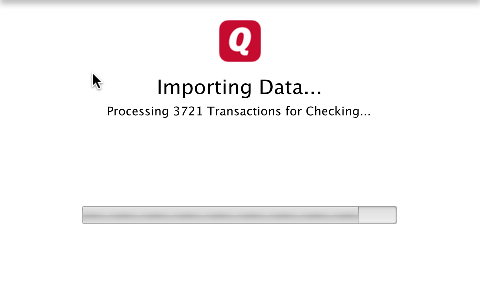
Many bills, such as rent and insurance payments, occur at regular intervals and are always for the same amount. Scheduling your bill payments can save you time and help you remember to pay your bills when they're due. Made a mistake? Choose Edit > Undo from the Quicken menu or type ⌘ Z.Įnter a new bill or income reminder (scheduled transaction).You don't need to click Save to save the transaction-Quicken records the transaction automatically when you press Enter, move on to another task, or close the register.(Optional) Click Save to save the transaction.Splits are useful for applying multiple categories to a single transaction.(Users of older versions of Quicken may have used "Classes." Tags work in a very similar manner.) Tag - can also be useful for reporting.If you use Quicken Mobile, you can also add receipts using your phone or tablet and the Quicken Mobile. You can add attachments such as receipts (photos, PDFs) to the transaction.Checking accounts will also have a Checks tab used for creating printed checks. You can also click the Edit Details button (in the middle of the register row) to expose more editing options such as the memo and tag fields (both of which can be added as columns) and the Splits and Attachments tab.For example, users of older versions of Quicken may want to remove the "Amount" columns and instead use the "Payment" and "Deposit" columns. Don't see the column you need? Click the Columns icon in the Register Toolbar to choose the columns to display (or hide) in your register.Quicken will remember this preference the next time you download.)

(Note that downloaded transactions are auto-categorized, but you can change these auto-assigned categories to something different at any time. Most Quicken features and reports use categories.

Click the New icon in the register toolbar (or type ⌘ N).The Stay on Top of Monthly Bills section of the Overview also displays all upcoming scheduled transactions you have due. Quicken automatically creates new instances of the transactions into the future. You create a scheduled transaction for each of these and specify when and how often it occurs.

Scheduled transactions are transactions you create for regularly occurring bills, like your electricity bill or your rent, and for regularly occurring income, like your paycheck. One of the primary tools to help you do this is scheduled transactions. Quicken can help you stay on top of the bills you have coming due to make sure you'll have enough money and don't forget to pay them on time. But if you want Quicken to help you stay on top of upcoming bills, you will want to schedule transactions.
#MOVE FROM QUCKEN FOR WINDOWS TO QUICKEN FOR MAC DOWNLOAD#
If you've set up Quicken to download transactions from your bank or other financial institution, you might never or only rarely need to enter transactions. The transactions from your bank, together with manually entered transactions, allow you to track the "real balance" for your account. Even if you download transactions, you might still want to enter transactions by hand as well to keep your account up to date.


 0 kommentar(er)
0 kommentar(er)
